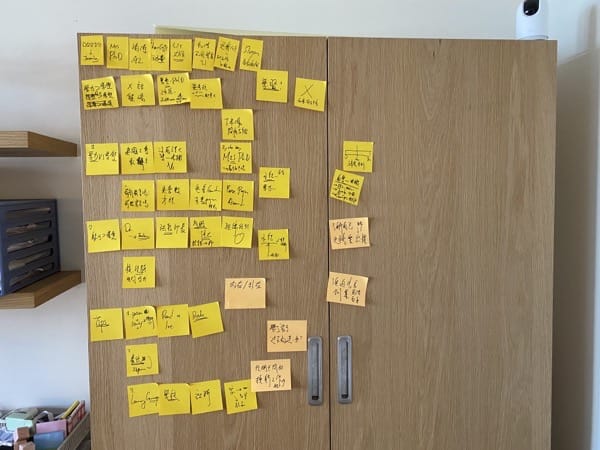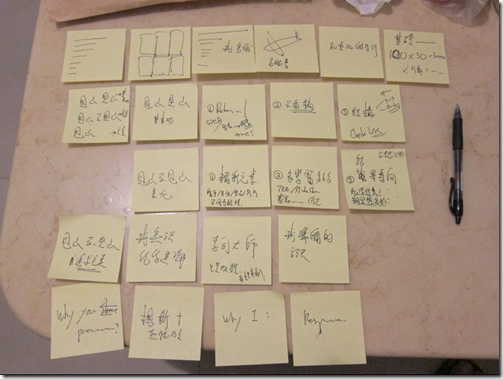How to Fail at Presentations – A Reverse Guide

Have you heard of Charlie Munger? Warren Buffett's longtime business partner who Buffett himself credits with an extraordinary influence: "Through the power of his thinking, he helped me evolve from an ape to a human. Without him, I would be much poorer than I am today." In his book "Poor Charlie's Almanack," wisdom shines through every sentence. My favorite is his lecture "How to Guarantee a Life of Misery," where he ironically offers four prescriptions guaranteed to make life miserable (plus three previously mentioned by others, totaling seven). He encourages everyone to think in reverse, using inverse thinking to find the best solutions. His insights are truly fascinating...
Perhaps I can try a similar approach by writing "How to Fail at Presentations!" After all, as a long-time presentation skills coach, I've had the opportunity to see more failed presentations than most people, though even the average person is likely familiar with the common characteristics of terrible presentations. Below are my prescriptions for those of you seeking to fail spectacularly at presenting:
1. Cram Your Slides with Text, Then Read Them Verbatim!
Absolutely! This is the first image that comes to mind. The presenter stands on stage, reading a mountain of text from their slides, while we in the audience... read faster than they can speak. They're still reading the first slide, but we've already finished all of them (especially when we have printouts of the same material in our hands). I guarantee this technique is foolproof! Just three consecutive text-heavy slides, and your audience will automatically shut down, completely tuning out whatever you're saying! This puts you well on your way to presentation failure... (because there's absolutely no need for you to read aloud! A complete waste of time.)
2. Talk About What You Want to Discuss, Not What the Audience Wants to Hear
Make absolutely sure to ignore what the audience wants to hear. Speak from your own perspective and discuss technical details that you know well. Remember to throw in plenty of jargon to demonstrate the depth of your knowledge or expertise. Just say whatever you feel like saying. After all, if the audience understands, that's their luck, and if they don't, it's not your problem.
This method is slightly riskier—you might accidentally engage your audience! But don't worry, just combine it with point #1, and failure is practically guaranteed. Create slides packed with text, and you'll still have an excellent chance of losing your audience completely. This way, you can achieve your goal of presentation failure!
3. Use Closed Body Language When Addressing Your Audience
Cross your arms in front of your chest if possible, or at least keep your hands in your pockets. Avoid making eye contact with the audience, and remember to hide behind the lectern (if there is one), or stay as far away from the audience as possible. No need to whisper—your regular volume is already hard enough to hear. All these tactics serve one purpose... to gradually make yourself invisible to the audience, until you completely disappear from their sight (because once they close their eyes, you naturally vanish).
4. Don't Practice!
For someone as brilliant and talented as you, practicing would be an insult to your abilities. Only those with limited capabilities need to practice. We need to be spontaneous to showcase our talent. What's that... you say you prepared too many slides and couldn't finish them all? Who cares! If you can't get through them, you can't get through them!
What?? The atmosphere was ice-cold from the moment you started? That's the audience's problem, why should you care? You only know what to say when the slide appears? Your presentation is choppy and disjointed? Well, what did you expect... isn't just showing up enough? Why so many demands?
As long as you maintain this mindset, you're on the right track! I guarantee your presentation skills will continue to deteriorate (What?? They've already hit rock bottom and can't sink any lower...?). Follow these steps, and I promise—your audience will never invite you to speak again!
I've thought long and hard about this, and I believe these four methods offer the best chances for you to progress toward your goal of presentation failure. I strongly encourage you to use multiple methods at once. Go big! Why fail a little when you can fail spectacularly? If you know other surefire ways to bomb a presentation, let me know! Together, we can perfect the ultimate failure guide!




